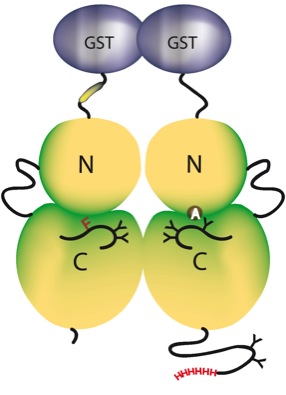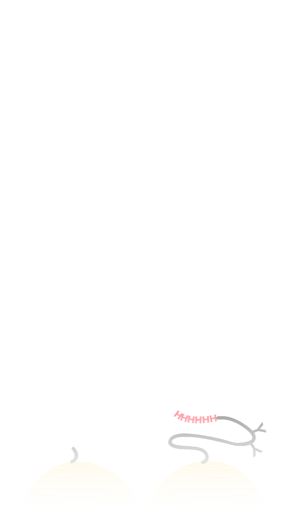

Hybrid Kinases

Dimerisation of receptor tyrosine kinases induces their activation, resulting in the autophosphorylation of the dimers. Current theory (Schlessinger et al. 1988/ 1989; Lammers et al. 1990; Ullrich et al. 1990) has it that this autophosphorylation acts in trans, that is, the subunits phosphorylate each other. Therefore, both dimerisation and trans-autophosphorylation are essential for the activation process. For the activation of the insulin receptor (IR), tyrosine residues located in the activation loop (Y1146, Y1150, and Y1151) are considered to play a key role (White et al., 1988). Furthermore, insulin receptor kinase phosphorylates serine residues in both the receptor itself and its substrates, revealing it to be a kinase with dual specificity.
The roles of the individual tyrosine residues for both IR activation and signal transduction has been discussed controversially, using numerous mutation analyses (Tavare et al. 1991; Wilden et al. 1992; Zhang et al. 1991; Dickens and Tavare 1992). However, neither in vivo nor in vitro studies yielded conclusive results as to the importance of the individual tyrosine phosphorylation sites. This could be due to the range of different methods employed, which makes comparison of results a challenge. All studies agree on the substitution of all three tyrosine phosphorylation sites leading to a significant reduction in kinase activity.
Not only the importance of the three phosphorylation sites, but also the order of their phosphorylation is subject to debate. Opinions range from random phosphorylation (Tavare and Dickens 1991) to an ordered pattern (Dickens and Tavare 1992; Wei et al. 1995), whereby two distinct orders are distinguished.
To generate a homogenous reaction basis for the analysis of the underlying mechanisms, several mutants of homo- and heterodimeric kinase constructs of the insulin receptor were created during this study. All constructs were expressed as GST fusion proteins in Sf9 cells, purified via affinity chromatography, and characterized for their activity in auto- and substrate phosphorylation. Analysis of these kinase mutants led to the following results:
-
✴During autophosphorylation, all monomeric, homodimeric, and heterodimeric kinase constructs displayed catalytic activity. The following tendency could be observed: WT=Y1151F=Y1146F>Y1150F. Therefore, none of the mutations in potential phosphorylation sites resulted in a knock-out mutant.
-
✴A comparison of the hybrids with the respective homodimeric reference kinase showed a comparable activity of the active subunit in both hybrid and homodimer.
-
✴Phospho-peptide mapping of the C-terminally shortened kinase mutants revealed phosphorylation of all tyrosine sites in the activation loop comparable to the hybrids.
-
✴A significant differences were observed between the results of the auto- and substrate phosphorylation. Substrate phosphorylation activity decreased in the order of WT≥Y1146F>Y1150F>Y1151F. Apparently, position Y1151 plays only a subordinate role for autophosphorylation, but has a substantive role during substrate phosphorylation.
-
✴All kinase constructs with the mutations Y1150F and Y1151F have the ability to dual phosphorylation largely lost.
-
✴The mutation analysis of the activation loop shows that the activity of the insulin receptor is determined by an interaction involving all three phosphorylation sites of the activation loop.


